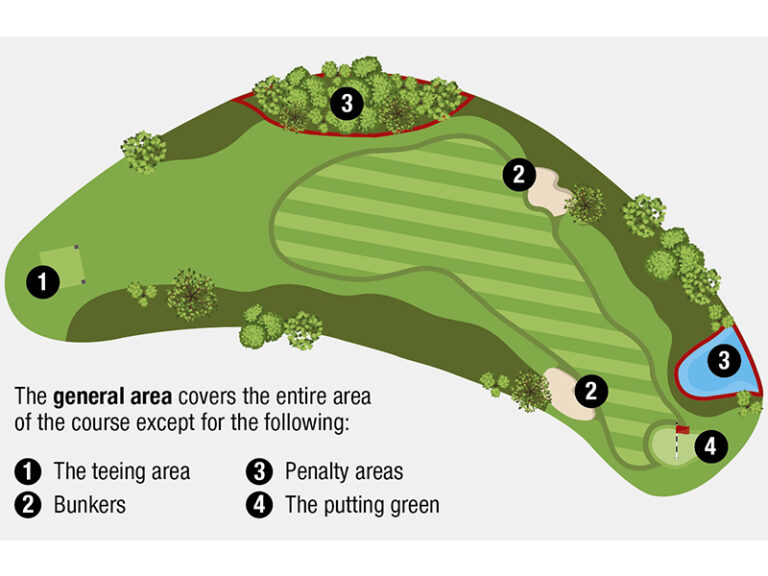Golf cart batteries typically last for about four to six years with proper maintenance. It’s essential to keep them charged and refill water if necessary to maximize their lifespan.
Golf cart batteries are crucial for the performance of these vehicles. Understanding their lifespan and how to extend it is important for golf cart owners. Proper maintenance and care can significantly impact the longevity of golf cart batteries. Let’s delve into the factors that influence the lifespan of these batteries and how to ensure they last as long as possible.
Contents
- 1 Factors Influencing Golf Cart Battery Longevity
- 2 Average Lifespan Of Different Golf Cart Batteries
- 3 Maintenance Tips For Prolonging Battery Life
- 4 Charging Practices And Battery Health
- 5 Signs Of A Failing Golf Cart Battery
- 6 Cost Considerations And Battery Replacement
- 7 Impact Of Accessories On Battery Drain
- 8 Faqs On Golf Cart Battery Usage
- 9 Frequently Asked Questions
- 10 Conclusion
Factors Influencing Golf Cart Battery Longevity
Golf cart batteries are essential for the functioning of the cart, and their longevity is dependent on several factors. These factors determine how long the battery will last before it needs replacement. Understanding these factors can help you take measures to prolong your golf cart battery’s lifespan and save you money in the long run.
Battery Type Variations
Battery type is an essential factor that influences the longevity of a golf cart battery. There are two primary types of golf cart batteries: lead-acid and lithium-ion. Lead-acid batteries are the most common type and are less expensive than lithium-ion batteries. On the other hand, lithium-ion batteries are more expensive but last longer and require less maintenance.
Usage Patterns And Their Impact
The usage pattern of your golf cart can also impact the battery’s lifespan. If you frequently use your golf cart for long-distance travel, the battery’s lifespan will be shorter. Similarly, if you frequently use the cart on hilly terrain or in extreme weather conditions, the battery will wear out faster. Additionally, frequent charging and discharging of the battery can also shorten its lifespan.
Maintenance And Care
Maintenance and care are crucial in determining the lifespan of your golf cart battery. Proper maintenance includes checking the battery’s water levels and keeping them topped up, cleaning the battery terminals, and ensuring that the battery is fully charged before use. Neglecting battery maintenance can lead to a shorter lifespan and the need for premature replacement.
Understanding the factors that influence golf cart battery longevity is crucial to prolonging the battery’s lifespan. By choosing the right battery type, monitoring usage patterns, and taking proper care of the battery, you can save money and ensure that your golf cart battery lasts as long as possible.
Average Lifespan Of Different Golf Cart Batteries
Golf cart batteries play a crucial role in the performance and longevity of your golf cart. Understanding the average lifespan of different types of golf cart batteries can help you make informed decisions about maintenance and replacement.
Lead-acid Battery Life Expectancy
Lead-acid batteries are a common choice for golf carts due to their affordability. On average, lead-acid batteries last about 4 to 6 years with proper maintenance. Regular charging and checking fluid levels can help extend their lifespan.
Lithium-ion Battery Advantages
Lithium-ion batteries are gaining popularity in the golf cart industry due to their longevity and performance advantages. These batteries can last up to 10 years or more, making them a durable and cost-effective choice for golf cart owners.
In summary, lead-acid batteries typically last 4 to 6 years, while lithium-ion batteries can provide a lifespan of up to 10 years or more. Choosing the right type of battery and maintaining it properly can significantly impact the overall performance and longevity of your golf cart.
Maintenance Tips For Prolonging Battery Life
Golf cart batteries are essential for the smooth operation of the vehicle. Regular maintenance and proper care can significantly extend the lifespan of the batteries. Here are some maintenance tips to help you prolong the life of your golf cart battery:
Regular Charging Strategies
1. Charge After Each Use: To ensure longevity, it’s important to charge the golf cart battery after every use, even if the usage is minimal. This helps in maintaining a consistent charge level and prevents deep discharging.
2. Avoid Overcharging: Overcharging can lead to the degradation of the battery. It’s crucial to follow the manufacturer’s guidelines for charging duration and avoid leaving the battery plugged in for extended periods after it’s fully charged.
Water Level Management
1. Regular Inspection: Check the water levels in the battery cells regularly, especially in warmer months when water evaporation is higher. Maintain the water level according to the manufacturer’s recommendations.
2. Use Distilled Water: When refilling the battery, always use distilled water to prevent mineral buildup, which can affect the battery’s performance.
3. Avoid Overfilling: It’s important not to overfill the battery cells with water, as this can lead to electrolyte overflow during charging.
Charging Practices And Battery Health
Maintaining proper charging practices is key to prolonging a golf cart battery’s lifespan. On average, golf cart batteries can last four to six years with regular maintenance and proper charging techniques. Ensuring the battery is not overcharged and allowing it to discharge before recharging can optimize its longevity.
The Debate On Persistent Charging
When it comes to the longevity of golf cart batteries, the debate on persistent charging continues to be a topic of interest. Some golf cart owners believe that leaving the batteries constantly plugged in keeps them in optimal condition, while others argue that this practice can actually shorten the battery lifespan.
Optimizing Charge Cycles
Optimizing charge cycles is essential for maintaining the health and longevity of your golf cart batteries. By understanding the impact of charging practices on battery health, you can ensure that your batteries perform at their best for an extended period.
Signs Of A Failing Golf Cart Battery
Golf cart batteries are essential for the smooth operation of your cart. Over time, these batteries can deteriorate, leading to performance issues and eventual failure. It’s important to be aware of the signs that indicate a failing golf cart battery, so you can address the issue before it causes major problems.
Performance Red Flags
When your golf cart battery is on the brink of failure, you may notice a decline in performance. Some performance red flags to watch out for include:
- Diminished speed and power
- Reduced driving range per charge
- Difficulty climbing inclines
- Intermittent loss of power
If you observe any of these performance issues, it’s crucial to inspect your golf cart battery for potential problems.
Physical Symptoms To Watch For
Aside from performance-related indicators, there are physical symptoms that can signal a failing golf cart battery. Keep an eye out for these signs:
- Corrosion on the battery terminals
- Bulging or swelling of the battery case
- Leaking electrolyte
- Visible damage or cracks on the battery casing
These physical symptoms can indicate underlying issues with the battery that require immediate attention to prevent further damage.
Cost Considerations And Battery Replacement
Golf cart batteries are essential for powering your cart and ensuring it runs smoothly on the course. However, over time, these batteries will start to lose their efficiency, leading to the need for replacement. Understanding the cost considerations and when to invest in new batteries is crucial for maintaining the optimal performance of your golf cart.
Analyzing The Cost-benefit Ratio
When it comes to golf cart battery replacement, it’s important to analyze the cost-benefit ratio. This involves considering the initial investment in new batteries and comparing it to the long-term benefits in terms of improved performance and longevity. Quality batteries may come with a higher upfront cost but can offer longer lifespan and better overall value.
When To Invest In New Batteries
Knowing when to invest in new batteries is essential for ensuring your golf cart operates efficiently. Keep an eye out for signs of deteriorating battery performance, such as decreased driving range, longer charging times, and diminished power. If you notice these issues, it may be time to consider investing in new batteries to maintain optimal performance.
Impact Of Accessories On Battery Drain
Accessory-induced Consumption
Additional accessories on a golf cart can drain the battery faster.
Each accessory draws power, shortening the battery life span.
Balancing Functionality And Power Usage
It’s crucial to balance adding accessories with battery power consumption.
Consider the impact of each accessory on the battery’s longevity.
Faqs On Golf Cart Battery Usage
Learn about golf cart battery usage with FAQs answered, including “How long does a golf cart battery last? ” Golf cart batteries typically last four to six years with proper maintenance, such as regular charging and water refills.
Optimal Charging Frequency
When it comes to maintaining the lifespan of your golf cart battery, charging frequency is a crucial factor to consider. The optimal charging frequency for your golf cart battery depends on how often you use it. If you use your golf cart daily, it is recommended to charge it every night. However, if you use it less frequently, it is recommended to charge it every two weeks.
Longevity In Different Climates
The longevity of your golf cart battery can vary depending on the climate you live in. In warmer climates, golf cart batteries tend to have a shorter lifespan due to the high heat and humidity. On the other hand, in cooler climates, golf cart batteries tend to have a longer lifespan. To ensure your golf cart battery lasts as long as possible, it is important to store it in a cool, dry place and avoid exposing it to extreme temperatures.
Some other frequently asked questions regarding golf cart battery usage include:
- How long does a golf cart battery last on a full charge?
- Should I leave my golf cart plugged in all the time?
- How far will a golf cart go on a full charge?
According to industry experts, golf cart batteries typically last between four to six years on average with proper maintenance. It is important to keep your battery charged regularly and refill it with water if necessary. Additionally, it is not recommended to leave your golf cart plugged in all the time as this can lead to overcharging and decrease the lifespan of your battery. Finally, the distance your golf cart can go on a full charge varies depending on the make and model of your cart, but most can travel around 20-30 miles on a full charge.
By following these tips and guidelines, you can ensure that your golf cart battery lasts as long as possible, providing you with many enjoyable rounds of golf.
Frequently Asked Questions
How Often Do Golf Cart Batteries Need To Be Replaced?
Golf cart batteries typically last four to six years with proper maintenance. Keep them charged and refill with water as needed.
How Long Does A Golf Cart Battery Charge Last?
A golf cart battery charge typically lasts for about 4 to 6 years with proper maintenance. Regular charging and water refills help prolong their lifespan.
Should I Leave My Golf Cart Plugged In All The Time?
For optimal performance, do not leave your golf cart plugged in all the time. Let the battery discharge before recharging to enhance longevity and operational stability.
How Far Will A Golf Cart Go On A Full Charge?
A golf cart can typically go up to 30 miles on a full charge, depending on the model and terrain.
Conclusion
To maximize the lifespan of your golf cart battery, maintain regular charging cycles and fluid levels. By allowing the battery to discharge fully before recharging, you can ensure optimal performance and longevity. Proper maintenance can extend the battery life up to six to ten years.






